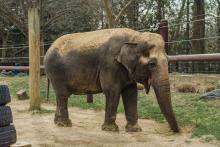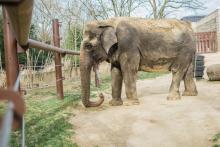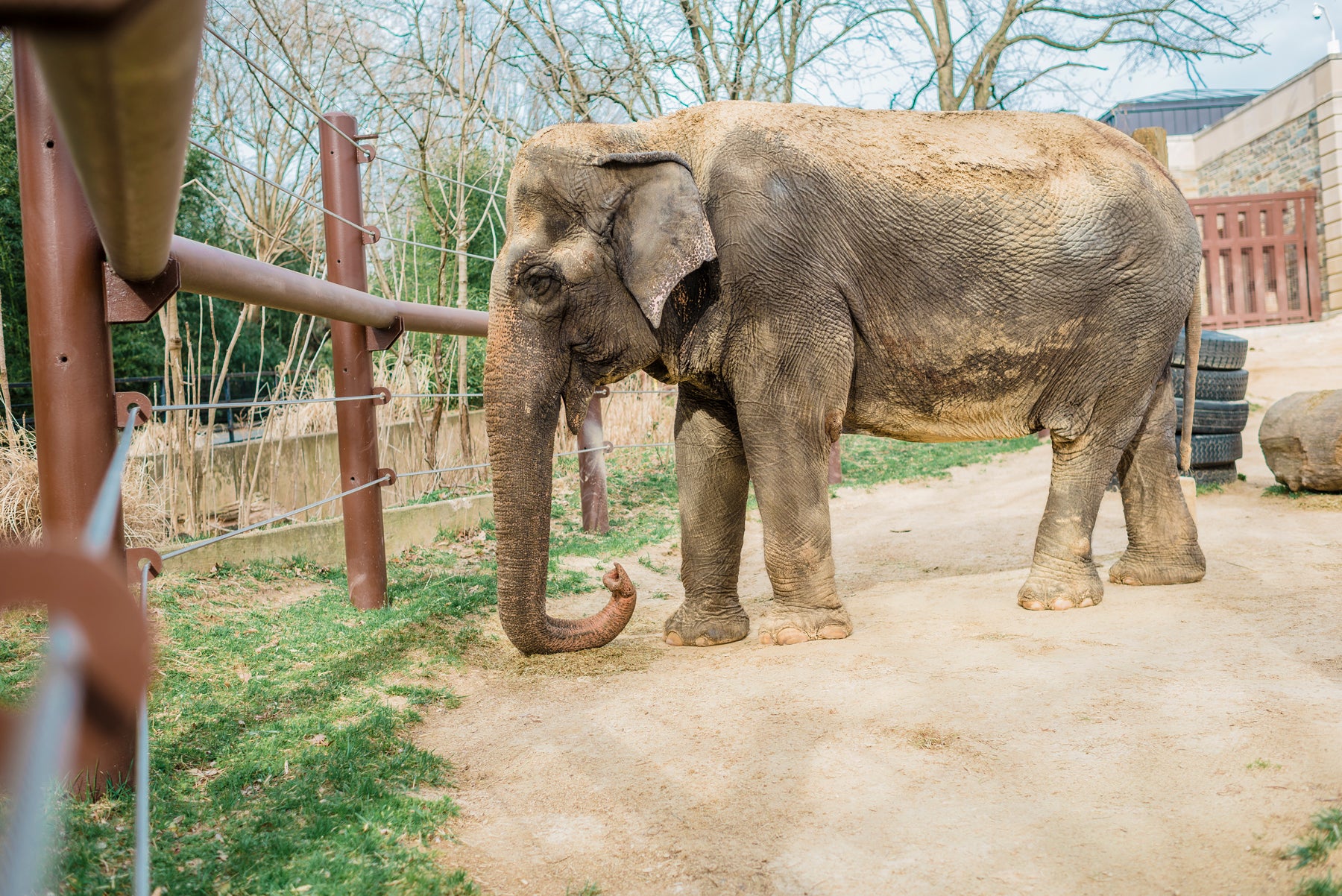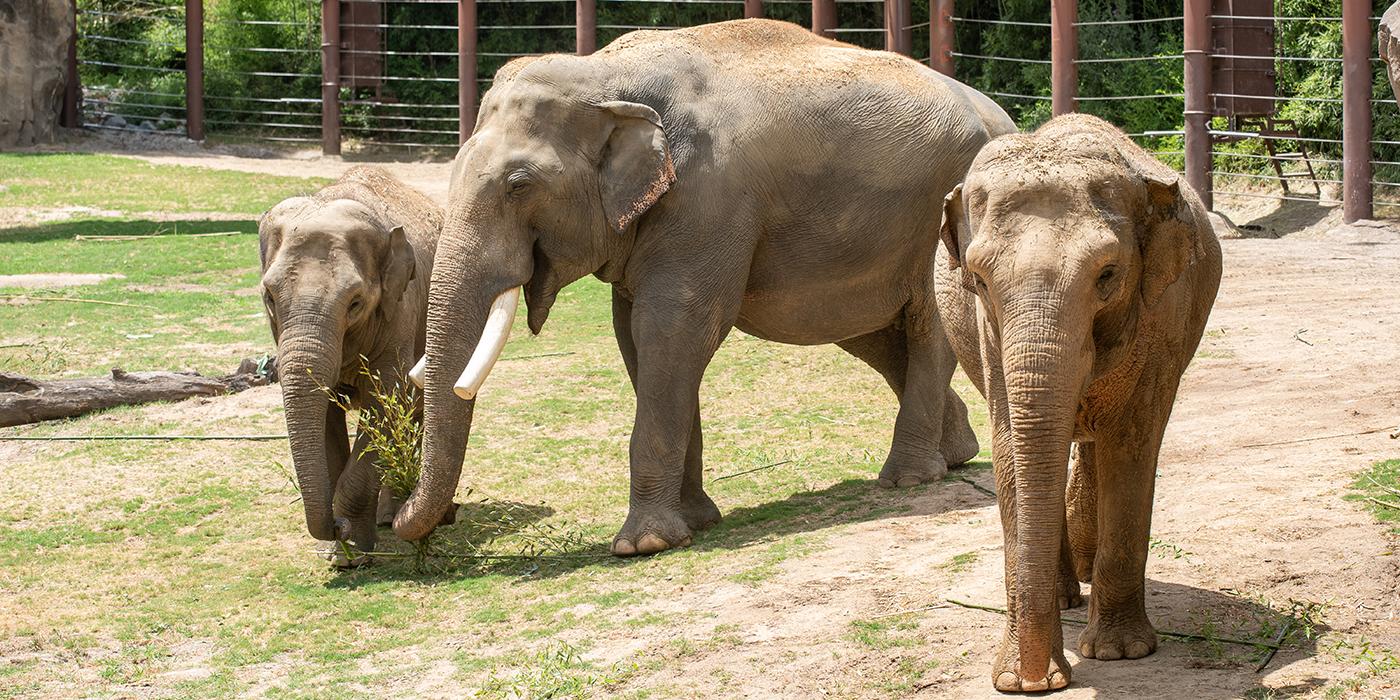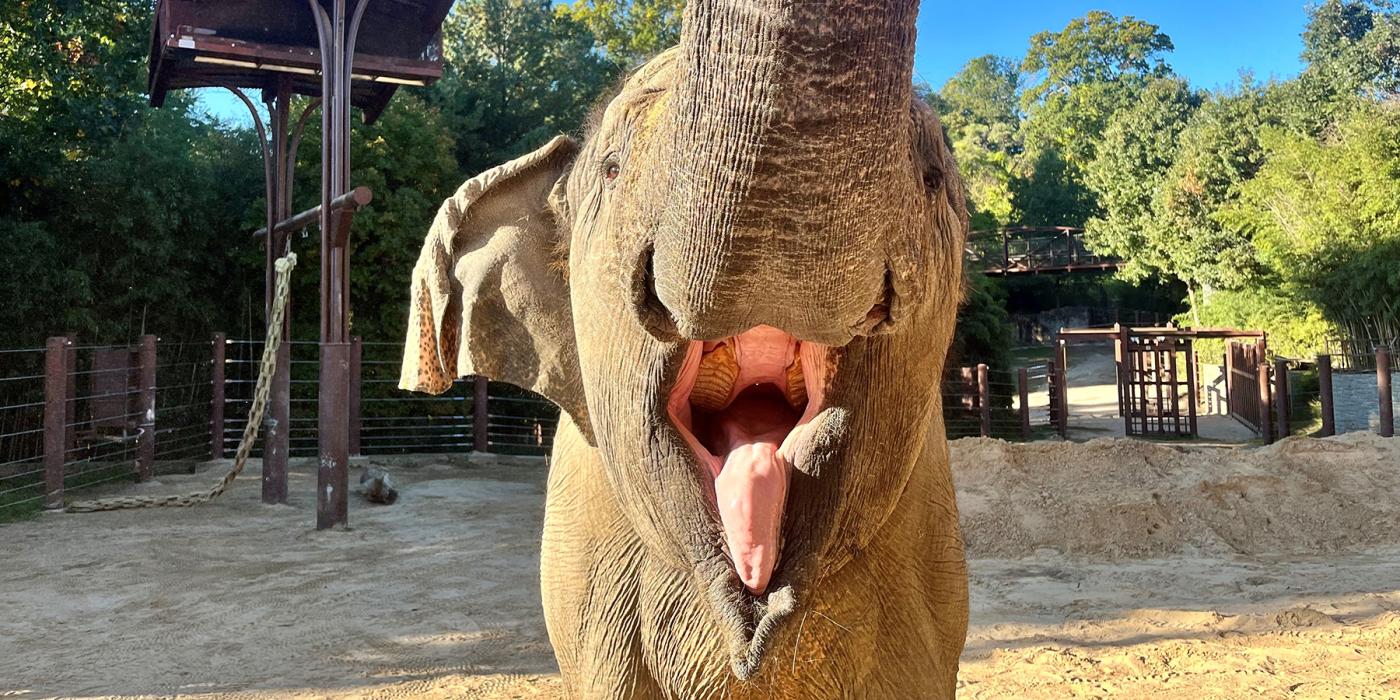Elderly Asian Elephant Ambika Dies at Smithsonian’s National Zoo
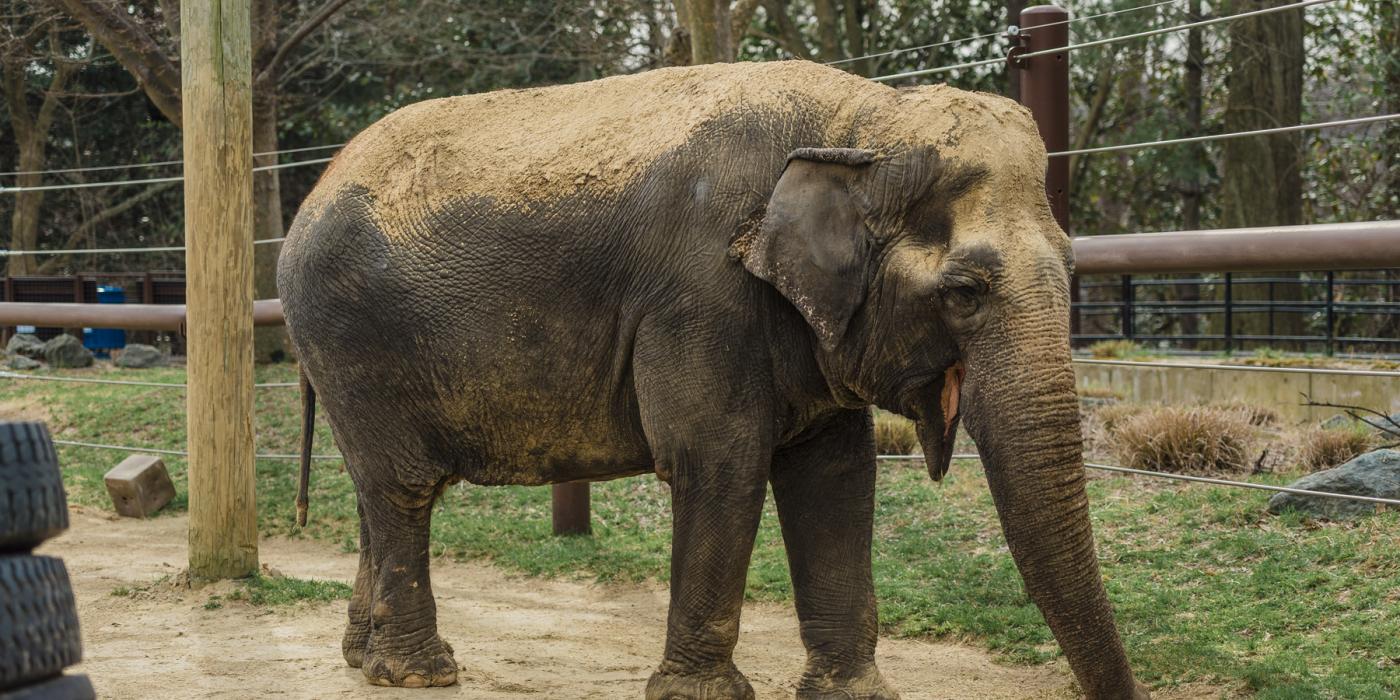
The Smithsonian’s National Zoo community is mourning the loss of Ambika, the beloved eldest member of its Asian elephant herd. She was humanely euthanized yesterday, March 27, following a recent and irreversible decline in her health. Animal care staff estimated Ambika to be around 72 years old, ranking her the third oldest Asian elephant in the North American population. Female Asian elephants in human care typically live into their mid-40s; there is not enough consistent data available on wild Asian elephants to accurately estimate their lifespan. For the past 59 years, Ambika has been integral to the Zoo’s campaign to save Asian elephants from extinction and a favorite among generations of Zoo visitors.
“Ambika truly was a giant among our conservation community,” said Steven Monfort, John and Adrienne Mars Director, Smithsonian’s National Zoo and Conservation Biology Institute. “For the past five decades, Ambika served as both an ambassador and a pioneer for her species. It is not an exaggeration to say that much of what scientists know about Asian elephant biology, behavior, reproduction and ecology is thanks to Ambika’s participation in our conservation-research studies. Firsthand, she helped shape the collective knowledge of what elephants need to survive and thrive both in human care and the wild. Her extraordinary legacy and longevity are a testament to our team, whose professionalism and dedication to Ambika’s well-being and quality of life exemplifies the critical work our community does to save these animals from extinction.”
Ambika’s Recent Health Treatments
The Zoo’s elephant and veterinary teams meet regularly to discuss each individual animal’s overall health and ongoing treatments. Ambika had undergone treatment for osteoarthritis, a condition that first developed when she was in her late 60s. Although the condition is incurable, animal care staff took steps to ease Ambika’s pain and help slow the progression of her disease. Veterinarians prescribed anti-inflammatories, analgesic medications and various joint supplements. While these treatments initially helped, over time Ambika also developed lesions on her footpads and nails. In addition to regular foot baths and pedicures, the team administered topical medications and oral and topical antibiotics to treat these issues. Although the animal care team tried multiple methods of husbandry management and medical treatments, they were unable to successfully control and prevent further progression of the lesions.
Last week, keepers noticed that Ambika’s right-front leg, which bore the brunt of her weight, developed a curve that weakened her ability to stand. Though she had some good days and some bad days, staff grew concerned when she chose not to explore her habitat as much as she normally would or engage with her keepers or elephant companions, Shanthi and Bozie. In discussing Ambika’s overall quality of life, the elephant and veterinary team strongly considered Ambika’s gait, blood-work parameters, radiographs, progressions of her lesions and her tendency to occasionally isolate from Shanthi and Bozie. Given her extremely old age, decline, physically and socially, and poor long-term prognosis, they felt they had exhausted all treatment options and made the decision to humanely euthanize her.
Ambika’s euthanasia took place in the Elephant Barn. Shanthi and Bozie were not present for the procedure, but were given an opportunity to spend some time with their deceased herd mate given their close bond with her. Many scientists believe that the process of exploring the body of the deceased elephant is a recognition of the death and is likely part of a grieving process. Elephants will commonly touch the temporal glands, ear canal, mouth and trunk tip. Often, they will make a rumble vocalization while inspecting the body. For approximately 15 to 20 minutes, Shanthi and Bozie walked around Ambika. They sniffed and touched her with their trunks. Although the pair usually communicate with squeaks, honks and trumpets, they were fairly quiet during this encounter.
Ambika’s History at the Smithsonian’s National Zoo
Born in India around 1948, Ambika was captured in the Coorg forest when she was about 8 years old. She worked as a logging elephant until 1961, when she was given to the Zoo as a gift from the children of India. Elephant keepers have fondly reflected on Ambika’s sense of humor, particularly during mealtimes, when the persnickety eater would arrange her grains to her liking before eating.
Most Zoo animals participate in the Association of Zoos and Aquariums’ Species Survival Plan (SSP); scientists determine which animals to breed by considering their genetic makeup, nutritional and social needs, temperament and overall health. Ambika never participated in the SSP for Asian elephant management. Rather than breed, she served as an educational ambassador for her species.
Ambika was one of the most researched elephants in the world. As part of the Zoo’s enrichment and training program, elephant keepers trained Ambika to voluntarily participate in daily husbandry care and medical procedures. Not only did this allow animal care staff to routinely monitor her health, but it also gave her the opportunity to help Zoo scientists better understand the behavior, biology, reproduction and ecology of Asian elephants. Ambika routinely allowed staff to collect blood samples for the Smithsonian Conservation Biology Institute’s endocrine lab to study cortisol levels, participated in studies that assessed elephant vocalizations and enrichment preferences, and enabled veterinarians to take carpal and toe radiographs to study the onset and progression of osteoarthritis. Most notably, Ambika was the first elephant to receive the gonadotropin-releasing hormone (GnRH) vaccine to prevent leiomyomas—fibroids in the uterus—which are a known cause of mortality in Asian elephants in human care.
Asian Elephant Conservation
Native to 13 countries throughout South Asia and Southeast Asia, Asian elephants are considered endangered by the International Union for Conservation of Nature due to poaching, habitat loss and human–elephant conflict. Conservation scientists estimate the total population to be between 30,000 and 50,000 individuals. Due to their need for large areas of sustainable habitat, Asian elephants are considered an umbrella species—their survival helps to maintain biological diversity and ecology over large areas.
For more than 50 years, scientists at the Zoo and Smithsonian Conservation Biology Institute have been at the forefront of studying Asian elephants at the Zoo and in their native habitats. Together, they are creating a comprehensive view of Asian elephant biology, behavior, reproduction, health, genetics, migration, elephant endotheliotropic virus (EEHV) and the challenges surrounding human–elephant conflict. Because of its existing relations with U.S. and foreign governments, non-governmental organizations, and major academic and zoological institutions in elephant range countries, the Zoo is uniquely positioned to spearhead efforts that improve life for Asian elephants in zoos and save them in the wild.
As a public health precaution due to COVID-19, the Smithsonian’s National Zoo and Conservation Biology Institute is temporarily closed to the public. Upon reopening, visitors to the Elephant Trails habitat can view the Zoo’s male elephant, Spike, and five female elephants: Shanthi, Bozie, Kamala, Swarna and Maharani. Meantime, visitors to the Zoo’s website can watch them on the Elephant Cam.
Related Species:
Image Gallery
